




Well, it’s that time of year again – we’ve passed Halloween and the end of score posting season in Montana. The fall weather has been mostly kind to the Treasure State and rounds posted continued to the end of the month. We were fortunate. I am always lamenting the end to the golf season, but also uplifted by looking back and recounting how the season went throughout the state – not only regarding Montana State Golf Association events, but our member clubs (and their club champions – see our spread beginning on page 10).

I (like you) also enjoy recounting how my own year in golf went. I wish I had made it to more clubs this year, had played more courses and I’m still searching for the elusive ace. I’m glad I was able to get some late season rounds in with my father, my friends and while statistically I didn’t play better, I know I made more birdies this year!
More than three million players in the U.S. currently post their scores to maintain a Handicap Index®. If you’re reading this, chances are you have a handicap and are a



member of the MSGA. Thank you!
A recent article in Golf Journal addresses the idea of “Are You an Average Golfer?” It’s a fun and informative read if you’re interested in the topic. A few highlights:
The voluminous database of scoring records reveals that at this time, a Handicap Index® is 14.2 for men and 28.7 for women and The National Golf Foundation, which conducts monthly and annual participation surveys of more than 36,000 golfers, concluded that the average 18-hole score for men and women in the United States is about 94. I would argue that this data, while arrived at with sound scientific method, the reality is the average golfer shoots well north of 100 if we’re being honest and inclusive of those who do not have a Handicap Index®.
This year, for the first time, golfers were able to have access to a free trial of the Golf Handicap and Information Network (GHIN) App and get a feel for score posting. I believe that the inherent benefits of maintaining a handicap are not about competition as much as creating a log of where you played, when you played and being able to see your progress (or in my case regression?) and generally stay more engaged with the sport on a personal level.
BOARD OF DIRECTORS - OFFICERS
PRESIDENT................................. Peter Benson
VICE PRESIDENT................ Ron Ramsbacher
TREASURER..................................... Bill Dunn
PAST PRESIDENT........................... Carla Berg
WOMEN’S CHAIR...................... Mary Bryson
BOARD OF DIRECTORS
Bill Dunn, Ron Ramsbacher, Brett Bennyhoff, Rod Stirling, Mary Bryson, Tracy Paine, Karen Rice, Joe Rossman, Peter Benson, Lisa Forsberg, Marcia Hafner,Carla Berg, Cheri Ellis
MSGA STAFF
Executive Director......................................... Nick Dietzen
Tournament Director...................................... Tim Bakker
Communcations Coordinator.......................... Ty Sparing
Operations Manager............................. Michael Williams
Membership Operations Director............... Emily Hulsey
Online Support................................................. Ian Hulsey
Graphic Design & Content Coordinator......... Katie Fagg
USGA Boatwright Intern................................. Jess Miller
PARTNERSHIPS
Nick Dietzen ............................. 1 (800) 628-3752, ext. 2
406GOLF STAFF
Editor in Chief............................................... Nick Dietzen
Consulting Editor........................................ David Bataller
Staff Writer........................................................ Ty Sparing
Graphic Designer............................................... Katie Fagg

Montana State Golf Association P.O. Box 4306
Helena, MT 59604
1 (800) 628-3752 www.msgagolf.org
Speaking of engagement, I’m looking forward to two things the first week in November: the end of election flyers and text messages and the International Association of Golf Administrators Conference (IAGA).
Heading to the IAGA Conference is a meaningful kickoff for the MSGA to lean into looking forward to the 2025 season and learn from our peers across the country and share success stories. While we have already begun planning for 2025 and look forward to next month’s schedule release – we are focused on our membership first and foremost. While your handicap index will continue to be the main membership benefit, we are working hard to add additional benefits in 2025 and look forward to serving you and connecting you with opportunities, offers and engaging content in the year ahead.
As the weather turns and our focus may shift in Montana to other forms of recreation, we will be connecting you with travel-related information via our newsletter

and keep you updated on news and opportunities going forward.
While your handicap index may be stagnant for a few months, we hope that you will continue to stay up-to-date and engaged with the MSGA through our 406golf Online Publication as well as your physical copy of Pacific Northwest Golfer Magazine in December.
As we head into five months of “inactive season” we encourage you to continue swinging on a simulator, maybe make a trip to a warmer climate for a round or two and of course some fond recollections of an enjoyable 2024 season. We sure enjoyed ours. Thanks for being a member and we’ll continue to serve you all year long.





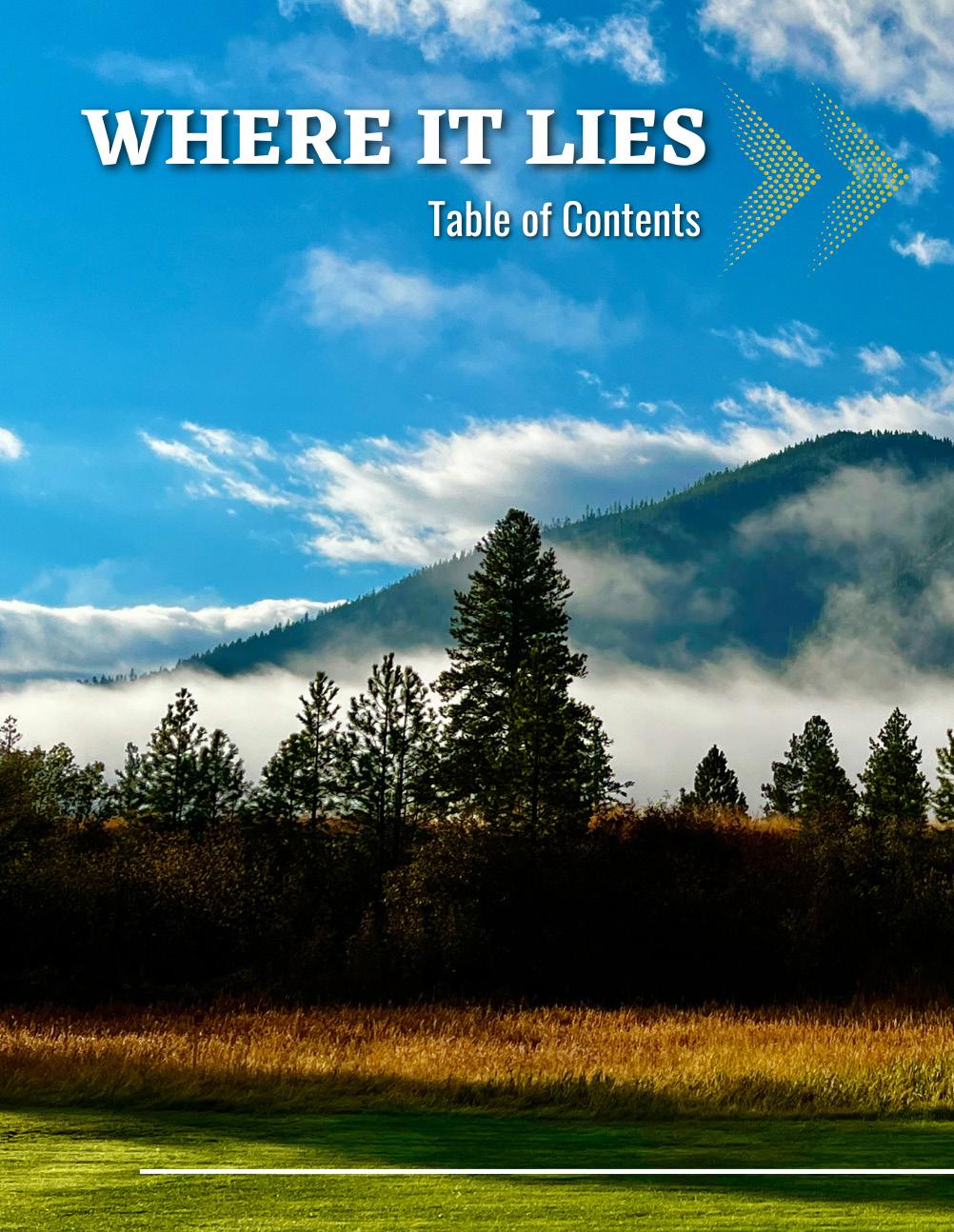

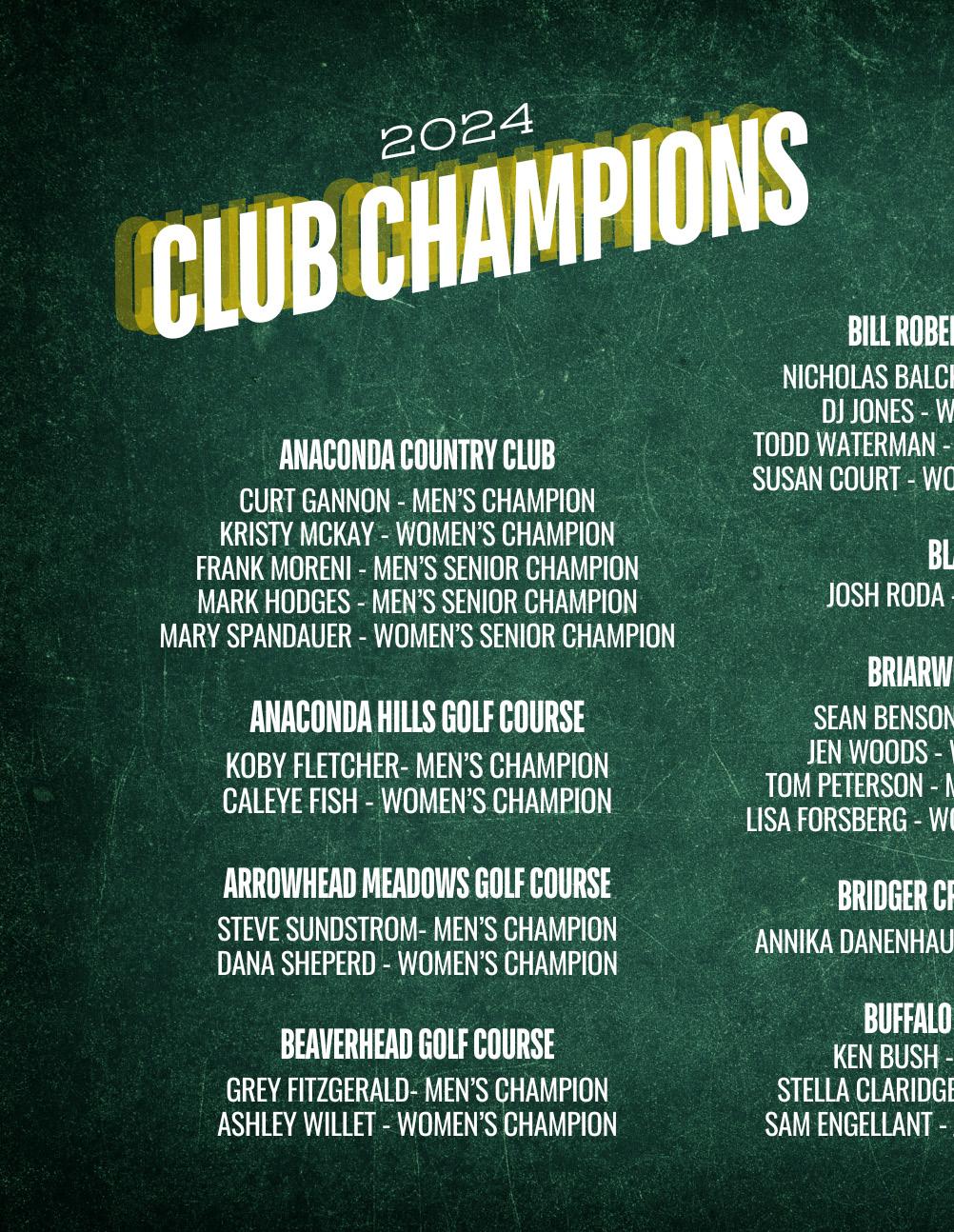
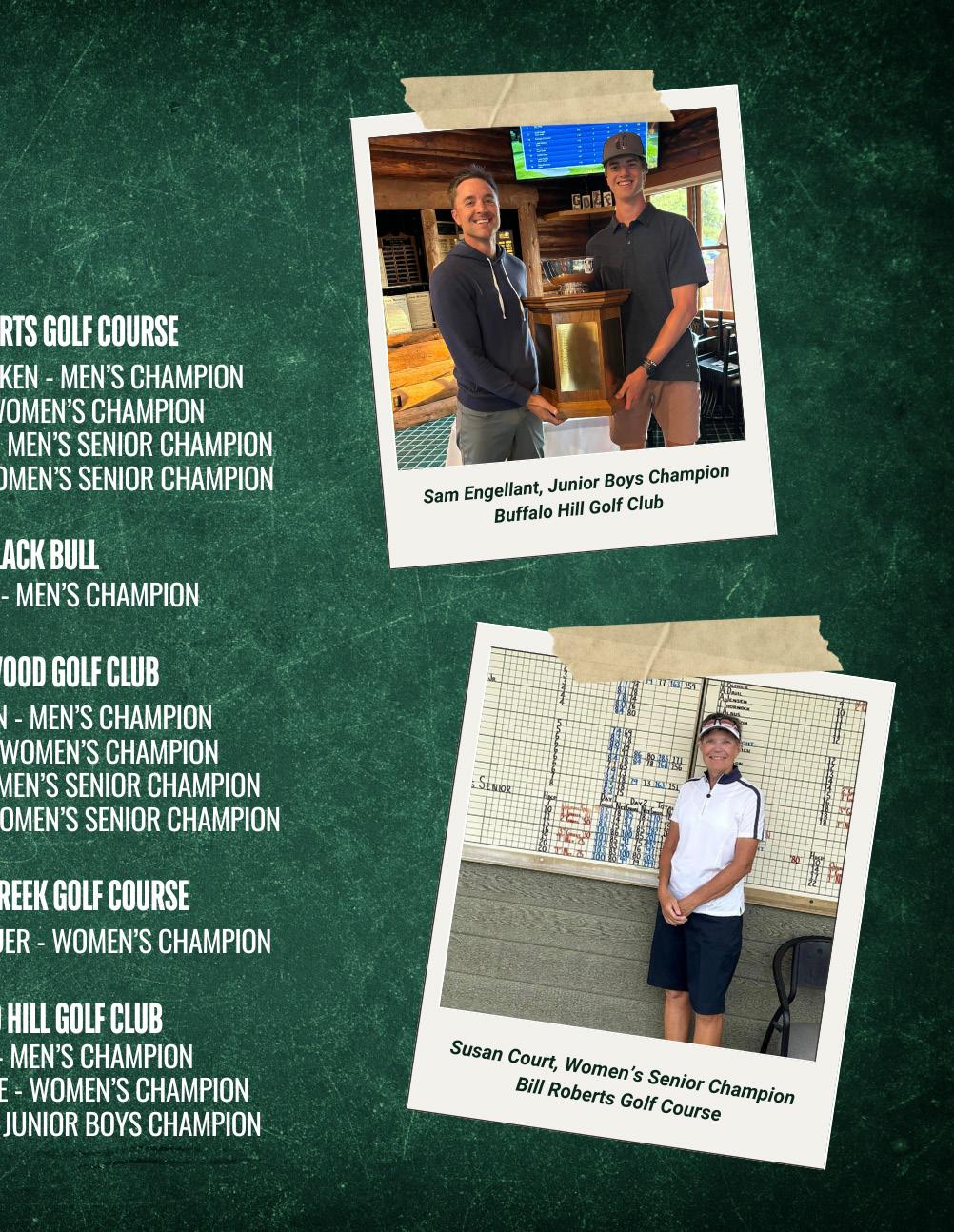
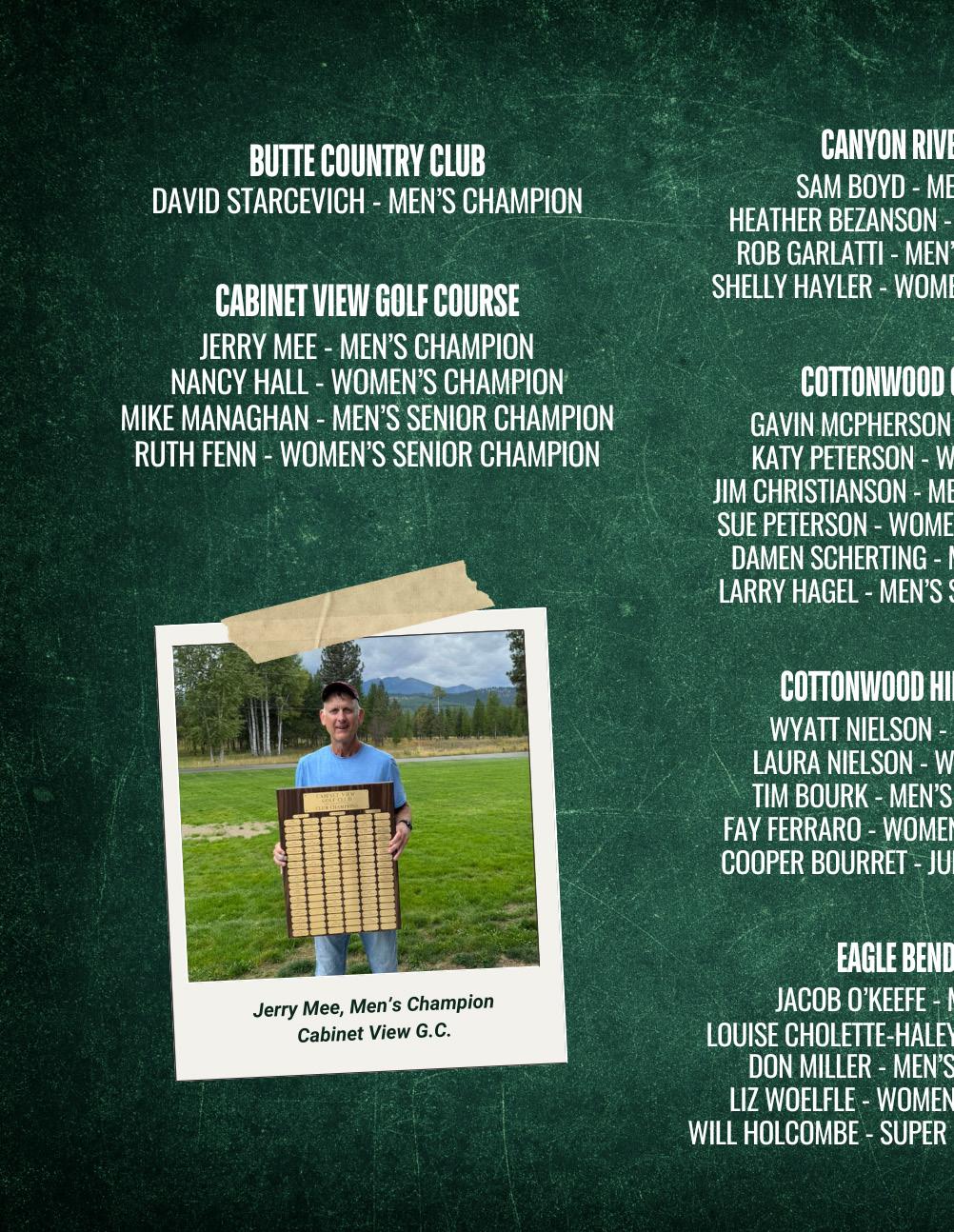





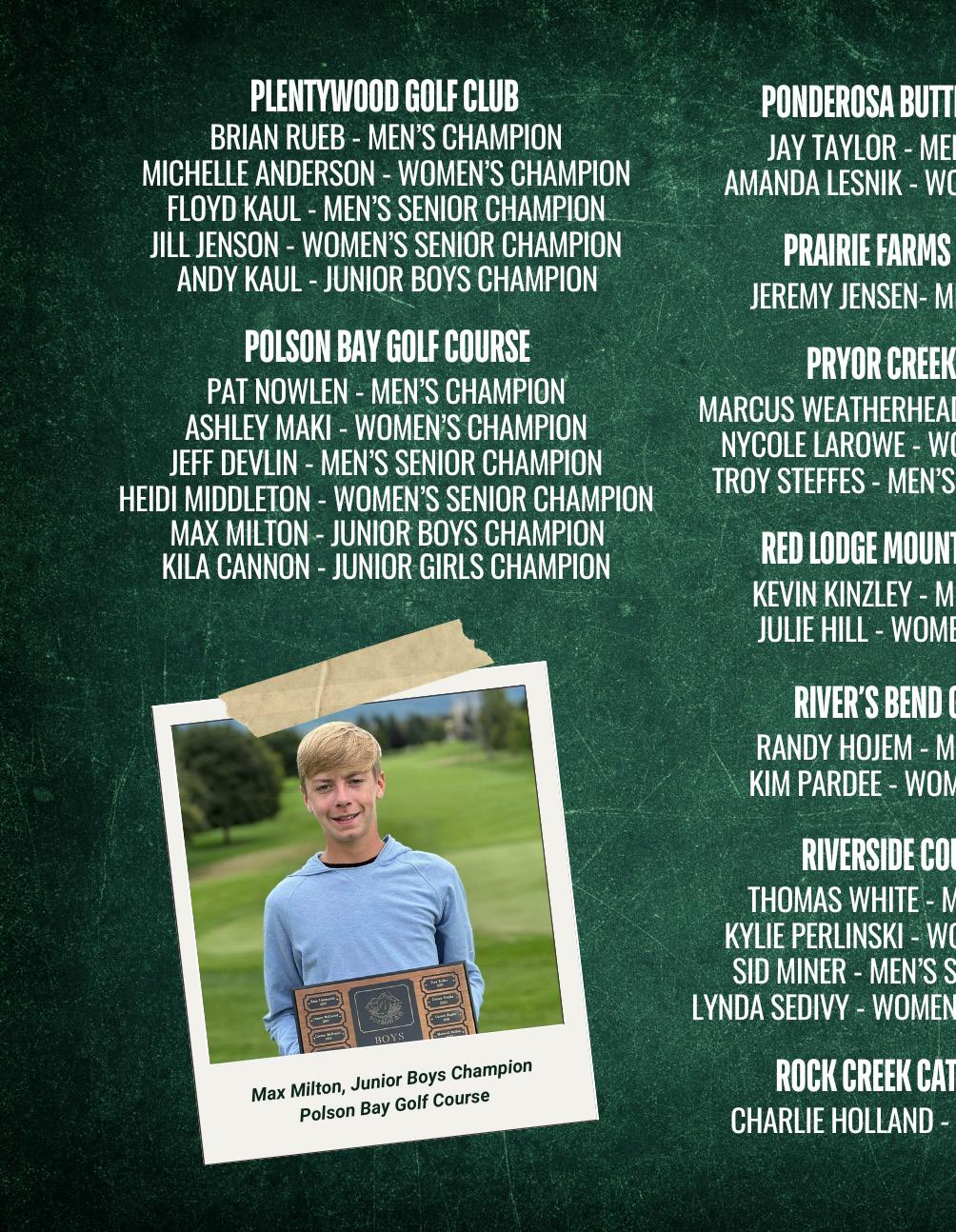
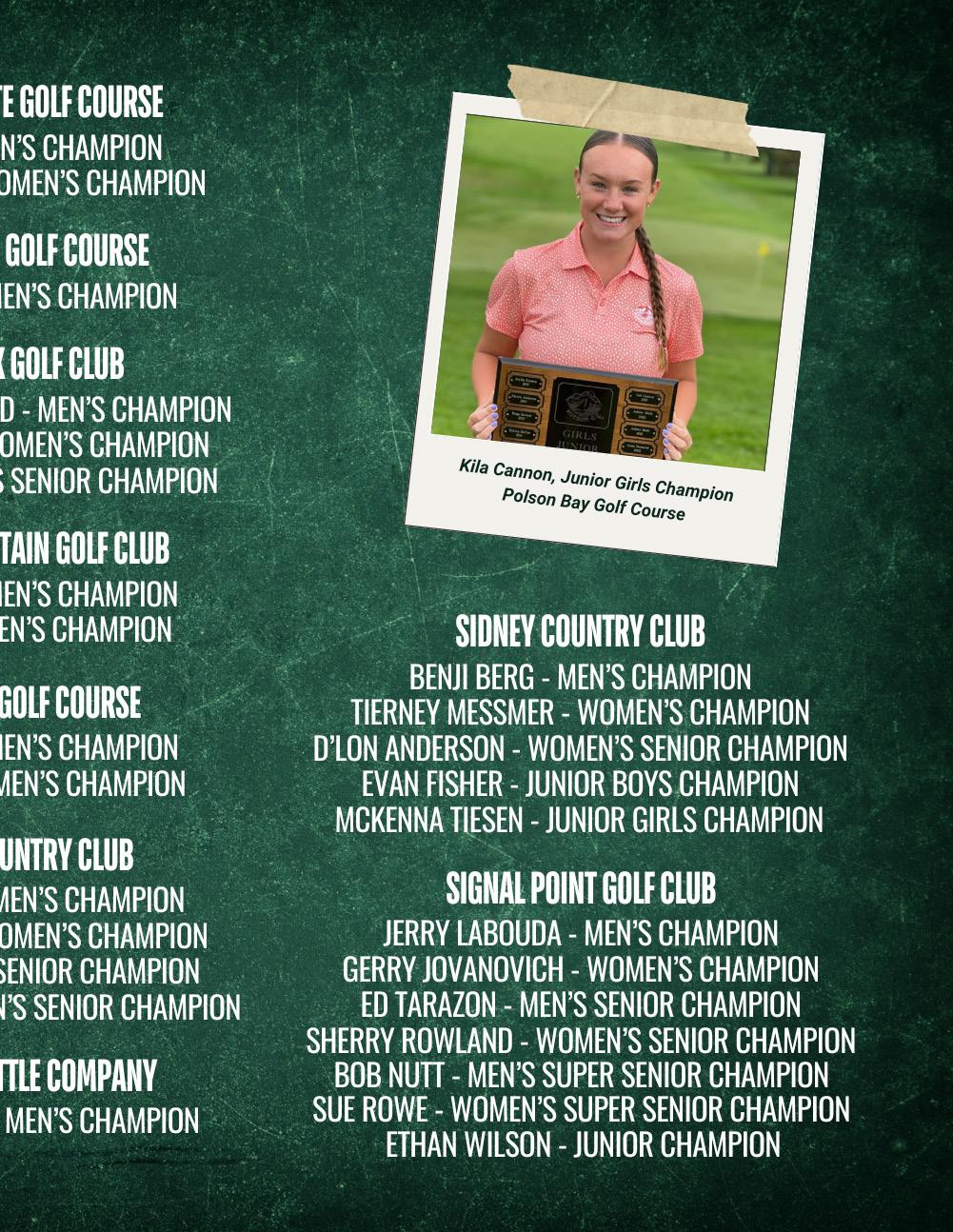



1. Who introduced you to golf?
I started later in life. I was in college, working summers for the City of Laurel. A group of us from work went to the Stillwater Golf Course in Columbus and played. I played with a set of borrowed clubs and I was horrible. I was immediately hooked.
2. Who influenced you the most in your golf life?
My golf life kind of has three different identities: player, parent, and coach.
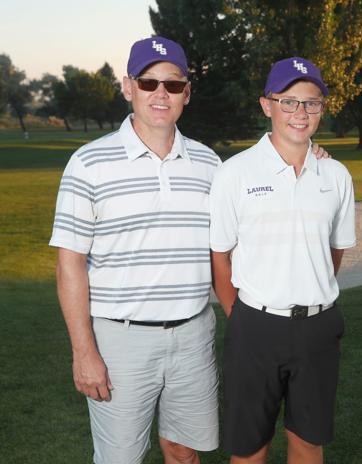
As a player, my brother-in-law and assistant coach, Shawn Hackmann greatly shaped my approach to the game. He taught me that improvement doesn't come by accident or shortcuts. While some people may have more natural talent, real progress requires dedication to the fundamentals and putting in the right kind of work. A little bit of practice on the right things, can go a long way.
As a golf parent, I quickly realized that I had to set my own game aside to focus on my kids’ development as golfers. Supporting someone else’s game while having little to no control over it is one of the hardest challenges I've faced. Watching the way my kids won with humility, but more so, lost with dignity and class, greatly influenced the way I wanted my players at Laurel High School to behave.

As a coach, I’ve been fortunate to learn from some incredible mentors. Roger Hauge, Bruce Robertson, and Bob Connors played key roles in shaping me as a coach. Along with many conversations with PGA Professional and U of M Lady Griz assistant coach Jeff Allen, also helped me refine and

validate my coaching philosophy as it is specifically related to golf. These influences allowed me to build a successful golf program at Laurel High School.
3. What’s your favorite part about being the Head Golf Coach at Laurel High School?
Winning! I have had the opportunity to be part of something very special at Laurel High School. During my 8 years as a head coach, we have won 10 State Championships. The boys have won six and the girls four.
Winning consistently isn’t an accident. It has been a collective effort and commitment by a group of people that joined together to accomplish very lofty and specific goals. It has been extremely rewarding being a part of it. The relationships and bonds that have developed between coaches, players, parents, school and community members, will last for the rest of our lives. .
4. What is your favorite course in Montana and why?
Laurel Golf Course. It is a good track that tests all aspects of your game. It is always in outstanding condition and has a wonderful variety of holes. My wife Robin and I raised our kids, Morgan and Paul on the course and it has created the fondest of memories for us.
5. What is a dream golf course you’d like to play once?
No contest, Augusta National.
6. What is your dream celebrity foursome (living or deceased)? Why would you choose them?
1. Arnold Palmer ‒ Besides his incredible golfing abilities, Arnold is famous for his kindness and ability to connect with people.
2. Winston Churchill ‒ As one of our greatest leaders in history and a quirky personality, I think he would be very interesting. I have found his “We Shall Never Surrender” attitude, inspirational in my life.
3. Jerry Seinfeld ‒ I think he would be entertaining and the fact that I don’t think he plays much golf, I should be able to beat him. I don’t want to take last in the group.
7. What’s your most memorable moment on a golf course?
Two memories stand out:
The first one was when my daughter Morgan won the Montana Women’s State Am at the Missoula Country Club in 2018.
The second was last spring at the GNAC Conference Championship at the resort course in Coeur d’Alene when my son Paul set the MSU-Billings low tournament score.
8. If you could change one thing about the game of golf what would it be?
The rule I w Pace of play. Anything over 4-4.5 hours is a waste of time.
9. What advice would you give to beginner golfers?
Be prepared to have your heart broken. You are going to fall in love with it, and golf is hard and mean. However, with some time, patience and effort all of the pain and suffering will be worth it.
Bonus: Lay up or go for it?
I hate to admit it, but I am a relatively conservative golfer. I want to say go for it, but my lack of ability will make me lay up. However, I will lay up with the intention of keeping birdie in play. Always compete!



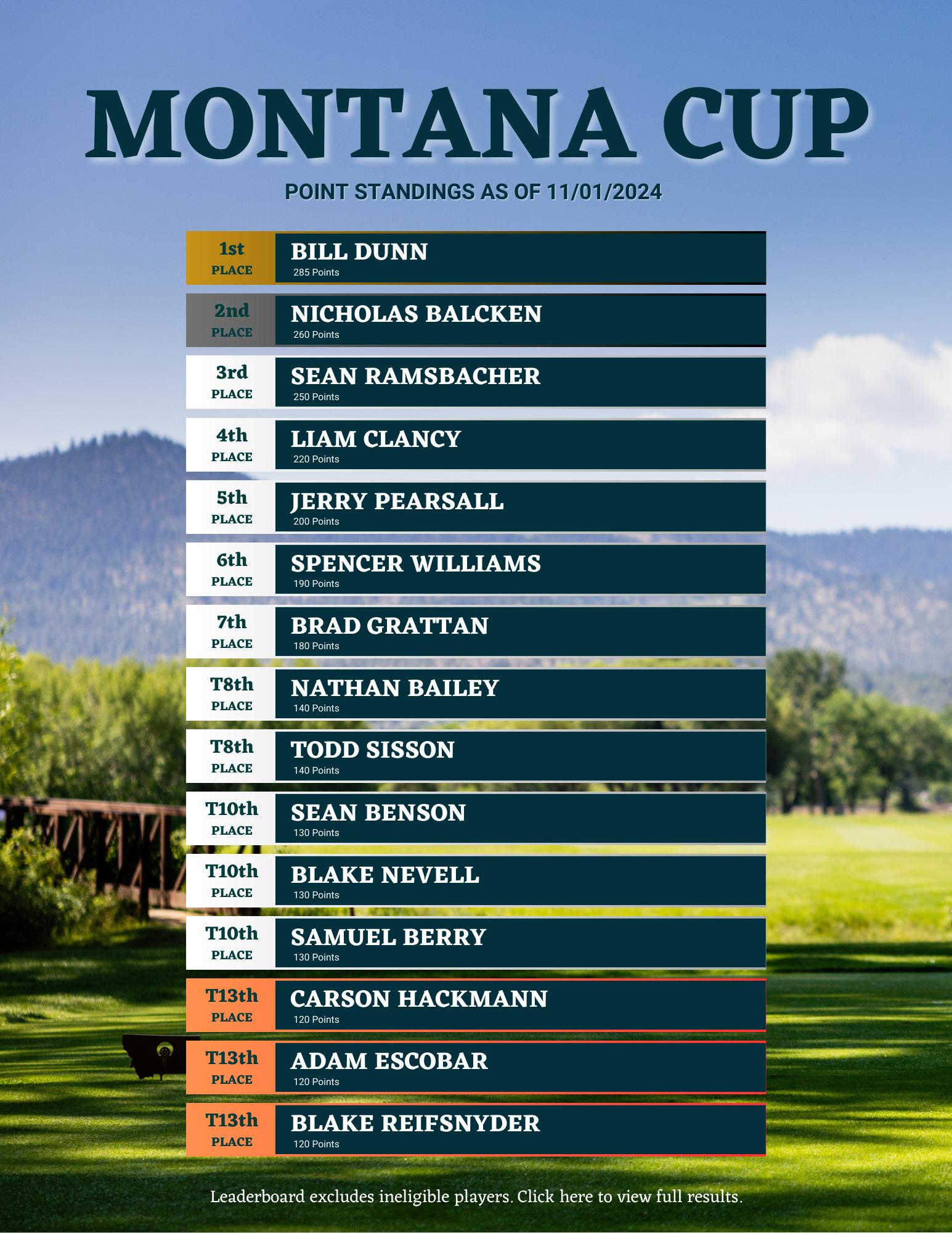

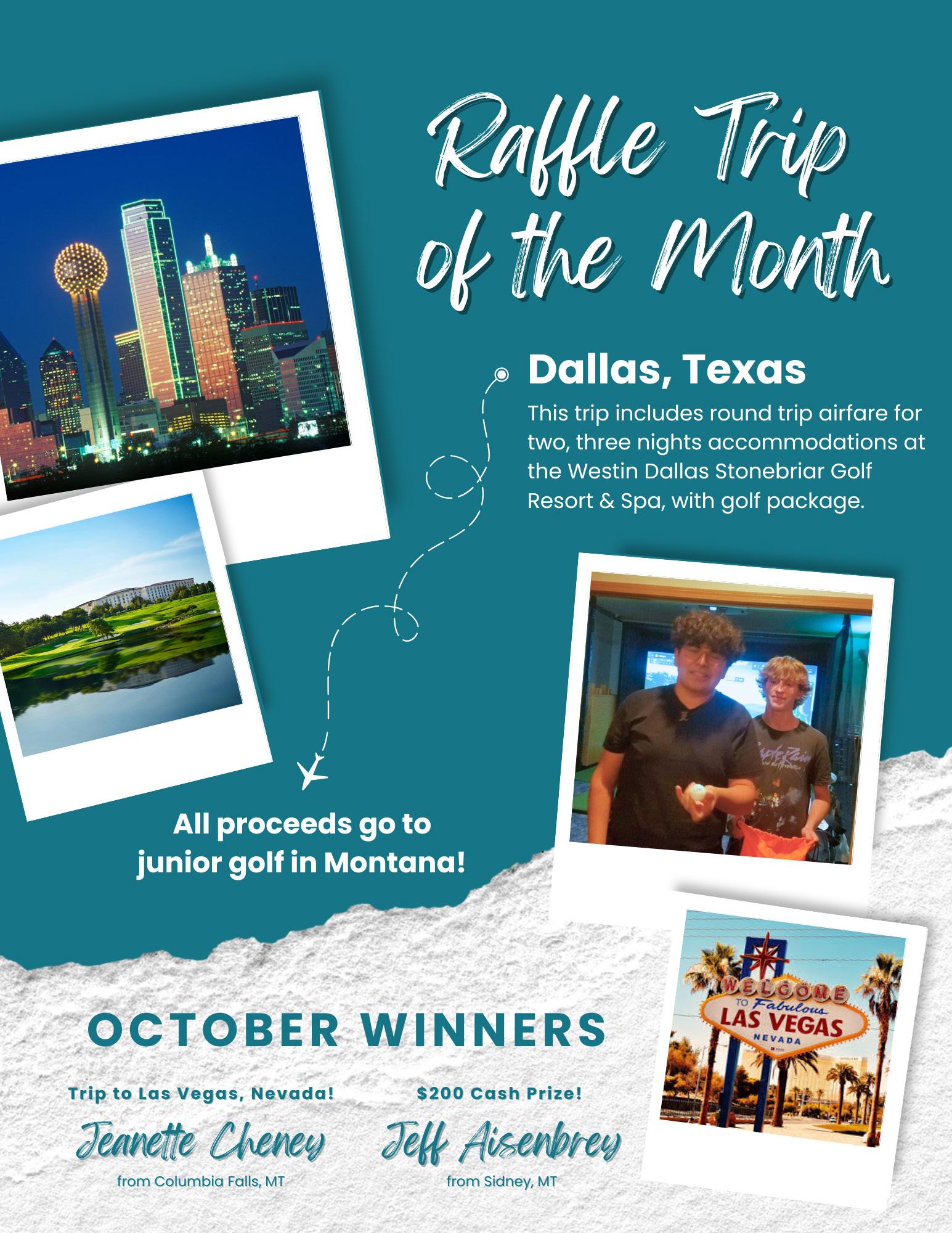

BY JESS MILLER
MSGA Communications Coordinator
Two rising stars from Montana recently competed in the Drive, Chip & Putt Regional Qualifier at Chambers Bay, showcasing their talents on a national stage. This competition, held at one of the premier golf courses in the

Pacific Northwest, challenged junior golfers in three core areas of the game: driving, chipping, and putting.
Drive, Chip & Putt is conducted in four stages: Local Qualifying, Subregional Qualifying, Regional Qualifying, and the National Finals, held the Sunday before the Masters Tournament. Local Qualifying takes place
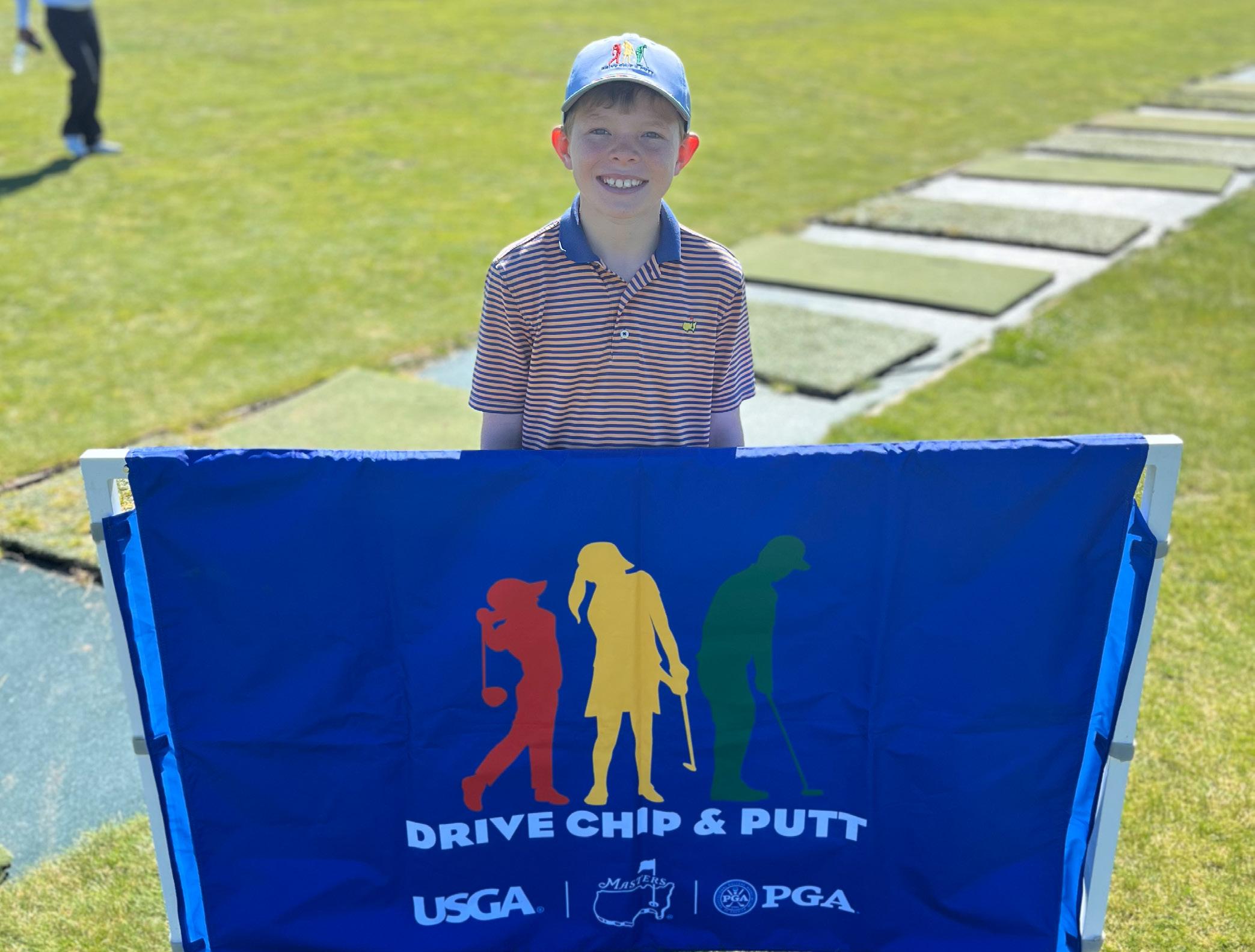

throughout May, June, and July, with participants advancing to Subregionals, Regionals, and ultimately, the National Finals based on their scores. Only the overall champions at each Regional Qualifier move on to the National Finals.
Each participant competed in all three skills, attempting three shots per skill for a total of nine shots. Participants accumulate points in each skill, with the highest points in an individual skill determining the winner of that category. The overall champion is crowned based on the highest combined point total across all three skills. For chipping, players must use a lofted iron or wood, as putters are prohibited. The setup for each skill may vary, reflecting real golf conditions with sloped driving grids,
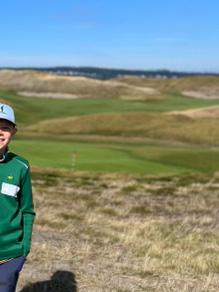
varying grass heights for chipping, and breaking putts to simulate real-life challenges.
In regional qualifying, Annika King, from Big Timber, participated in the Girls 12-13 division, scoring 18 points in driving, 8 points in chipping, and 20 in putting, finishing 11th overall. Malcolm Russell, from Shelby, put up strong scores of 41 in driving, and 45 each in chipping and putting, earning 5th place in his division.
Both juniors proudly represented Montana, gaining invaluable experience while competing at a high level. Their performances exemplify the strength of junior golf in Montana, with both following the rules of the event and upholding the sport’s code of conduct.
To learn more about drive, chip and putt CLICK HERE.


BY TY SPARING MSGA Communications Coordinator
Despite global chaos, World War 2 didn’t stop golf from being played. In a lot of cases what changed was who was playing the game and who wasn’t. Some of the state’s best golfers remained in Montana during the war and

went about business playing in tournaments and such (albeit they were highly constrained on resources). On the other hand, many of the state’s best golfers went overseas or to defense factories, in which case the opportunities for playing golf diminished greatly. However, there’s a third side to the story and that is of the people who had never picked up a club

in their lives but with the world

turned upside down, golf found them.
In the spring of 1942, deep in the heart of Nazi-occupied territories a POW camp called Stalag Luft III was established. Constructed in a small town in western Poland called Sagan, the remote detention center was one of many run by Herman Goering’s German air force, the Luftwaffe, and over the course of three years it held over 10,000 captured allied air force pilots. “Stalag Luft III,” a German term that conveyed it was a POW camp for allied air force officers specifically, had previously gained fame for a “Great Escape” in 1944, that was later made into a popular movie starring Steve McQueen.
The “Great Escape” and it’s setting in the Stalag Luft III compound certainly receives a lot of attention from World War 2 historians and researchers, but there’s another reason people are interested in learning about it:
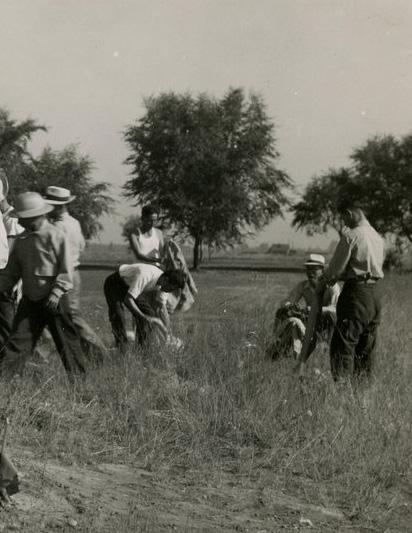
Because it was a camp where the POWs played golf.
As John Strenge writes in his book, “When War Played Through: Golf During WW2,” golf was introduced to Stalag Luft III in early 1943, when a captured Royal Air Force pilot named Sydney Smith discovered “an oddly shaped Red Cross parcel” that turned out to be a woman’s 5-iron. The “mashie” Strenge writes, had “immeasurable value to a POW desperately concerned with keeping himself occupied.” It took some creativity in figuring out what to use as a ball, not to mention getting permission from Nazi guards to build a nine-hole golf course within the confines of a POW camp.
With clearance from their captives, and an eventual supply of clubs sent by the Red Cross, the POWs only had to figure out what to hit. Golf balls were hard to come by during WW2 due to the global rationing of rubber, so the

detainees scoured the surroundings for material that might do the trick.
USGA historian Mike Trostel explains that “to create their own balls, the soldiers cut up the leather from their boots to form the outer shell. Then, they shaved thin pieces of their rubber soles and stuffed those inside the shell, which they stitched together with string, like a baseball.” The USGA Museum in Liberty Corner, New Jersey still has two of these golf balls on display. (For a short video produced by the USGA Museum on the golf balls from Stalag Luft III click here)
Golf provided a bit of solace in an otherwise depraved situation at Stalag Luft III, an experience a couple dozen young Montana men actually went through. And while these Montana POWs didn’t have much in the way of golf backgrounds, many were former athletes, and we might imagine that some of them picked up a club or two while detained. Perhaps even for just a moment they might’ve conjured up that special feeling that happens while playing golf, when everything dissolves except the ball and the club.
Lt. Paul Hartman from Great Falls was put in Stalag Luft III in the spring of 1943, shortly after his B-17 was shot down near Hamburg, Germany. He was there until January of 1944 and witnessed the early stages of golf course construction before he was transferred to a different POW camp. “We attempted golf,” he told a reporter from the Great Falls Leader shortly after he was liberated, “but it didn’t work out.”
(Funny I say that same thing when I play)
Nevertheless, when he got back home Hartman went on a speaking tour and repeatedly mentioned how “if it hadn’t been for the Red Cross I doubt if I would be here today,” – the Red Cross being the organization that sent food, medical supplies, clothes, and even a few dozen golf clubs to allied POWs.
Lieutenant Burt Talcott was another Electric City POW who was taken prisoner by the Nazi’s after his B-24 was shot down over

Austria. He showed up to Stalag Luft III two months after Hartman transferred away and he stayed there until the camp was liberated in May of 1945. Unlike his Great Falls compatriot, Talcott would’ve seen the completion of the POW camp golf course. The Wibaux Pioneer – Gazette even reported on a national story in October of 1944 that “a six-hole course has been laid out. Traps, bunkers and greens have been erected and practice playing has begun. Competitive matches are scheduled for the near future.”
Talcott was a standout athlete at Great Falls High several years previously, having captained the 1938 state championship football team. He even tried out for the Stanford football team after enrolling in college there. Perhaps golf might’ve appealed to an athlete like Talcott, who after the war was over went on to spend seven terms as a US Congressman in California. A man deeply committed to his community, when Talcott got back home, among other things he was very involved with the Red
Cross, and even helped establish the Salinas Golf and Country Club.
Speculation of course, as it is with the roughly two dozen other men from Montana who spent time in Stalag Luft III. It certainly wasn’t a happy place, and golf wasn’t on the top of the hungry POW’s priority lists but the hopeful side of us might daydream that it at least offered a modicum of comfort. As Strenge writes, “golf, even in this elementary and rudimentary form, worked as a passable distraction, allowing them to focus on something other than their next meal…it was all they had and they made the most of it.”
* * * * *
So too might we consider a slightly similar situation happening on our own soil, at Fort Missoula where it was used as a detention center for “foreign nationals and resident aliens” during World War 2.

Fort Missoula was originally established in 1877 as a military outpost built at the requests of settlers who were worried about conflict with the Indian tribes of western Montana. Over the decades it was used in a variety of ways and by the early 1940s Fort Missoula was handed over to the Department of Immigration and Naturalization to be used as an internment camp for Italian sea merchants and Japanese citizens residing in the United States. In her book “An Alien Place: The Fort Missoula, Montana Detention Camp, 1941-1945,” former University of Montana Journalism Professor (and current MSGA member ��) Carol Van Valkenburg wrote that “the Fort Missoula detention camp has a significant place in World War 2 history in relation to America’s treatment of citizens from Axis nations.”
Fort Missoula was one of the first internment camps in the country and was first occupied by one thousand Italian seamen six
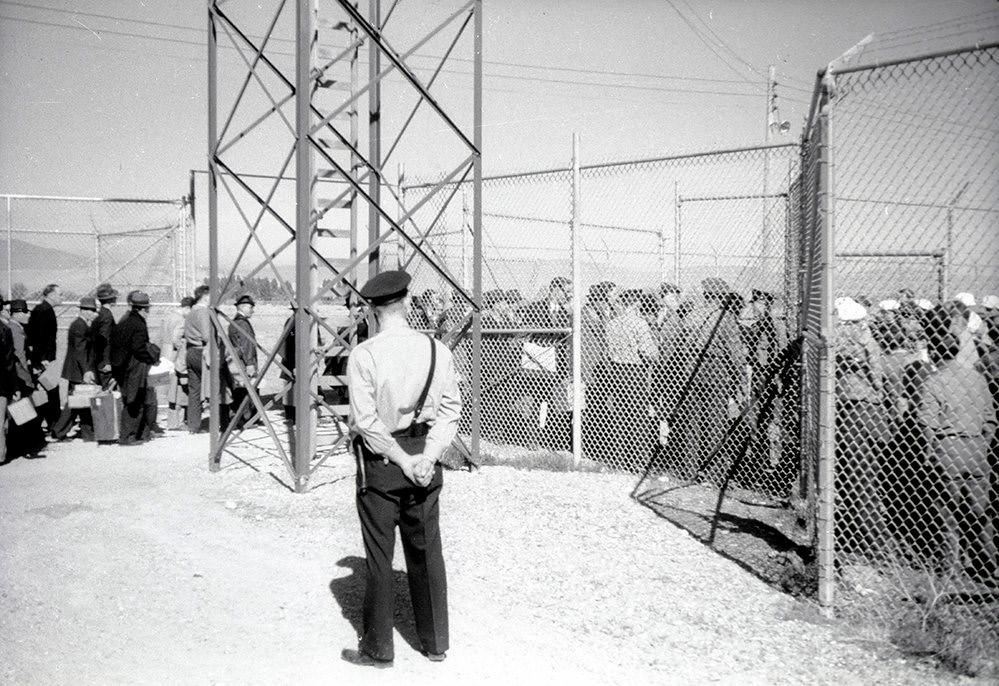
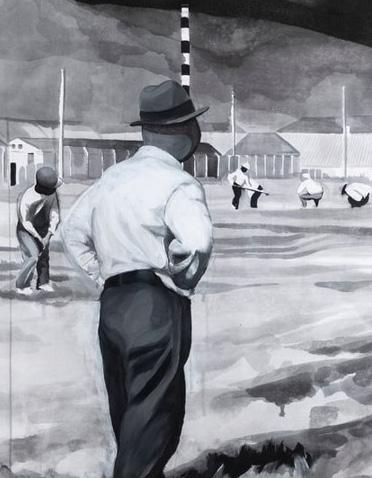
months before the U.S. even entered the war, with another thousand male Japanese entering the camp shortly after Pearl Harbor. This was a moment in time when Japanese citizens living in the United States were “barred by law from becoming American citizens, as were all Asians in that era,” Van Valkenburg tells us and they were “for the most part, the most successful and influential Japanese in the U.S. and thus the government feared they would be instrumental in leading any sabotage efforts, were any to be planned.”
The Italian’s and the Japanese immigrants (otherwise known as Issei) were generally kept separate but had similar routines during internship, including among other things the ability to play sports. The Italians generally

played soccer, baseball and bocce, whereas the Issei played golf and a little baseball.
By the spring of 1942, a nine-hole course dubbed “The Beautiful Sky Golf Course,” was constructed on Fort Missoula grounds. As Van Valkenburg’s research shows, one of the Japanese detainees was from Hawaii and remarked that the course “was almost as beautiful as that at Oahu Country Club, which did not admit Japanese as members but which they could see from certain parts of Nuuanu.”
In a dire situation, once again golf provided a shimmer of solace. Just like the American POWs that spent time in Stalag Luft III, the daily anguish of being detained, away from family, and subject to intense loyalty hearings was real, which no amount of recreation could expect to overcome.
Yet the game was there and it wasn’t making things worse, and we might offer a bit of hopeful speculation that a few birdies were made and maybe even a moment of peace was achieved for the detainees, however short-lived it might’ve been.
The memory of The Beautiful Sky Golf Course has certainly not faded over time as Fort Missoula has turned into a museum that meticulously preserves these records. Along with historians, artists have also been drawn to the site. Most recently Tokyo born artist Gaku Tsutaja had a residency at the University of Montana in 2019 where she created numerous paintings and sculptures that serve as a “satirical reimagining of the Japanese American experience during wartime internment.”
Indeed, Tsutaja’s dark humor is apparent in her paintings which are replicas of original photos she found while doing research at Fort Missoula, along with her surreal sculptures that include golf clubs with predatory animal heads. As the Executive Director of the Missoula Art Museum Laura Millin remarked, “the artist approaches this historic, yet timely, subject in a completely original way that is both Golf bag with animal head clubs, created by Gaku Tsutaja.
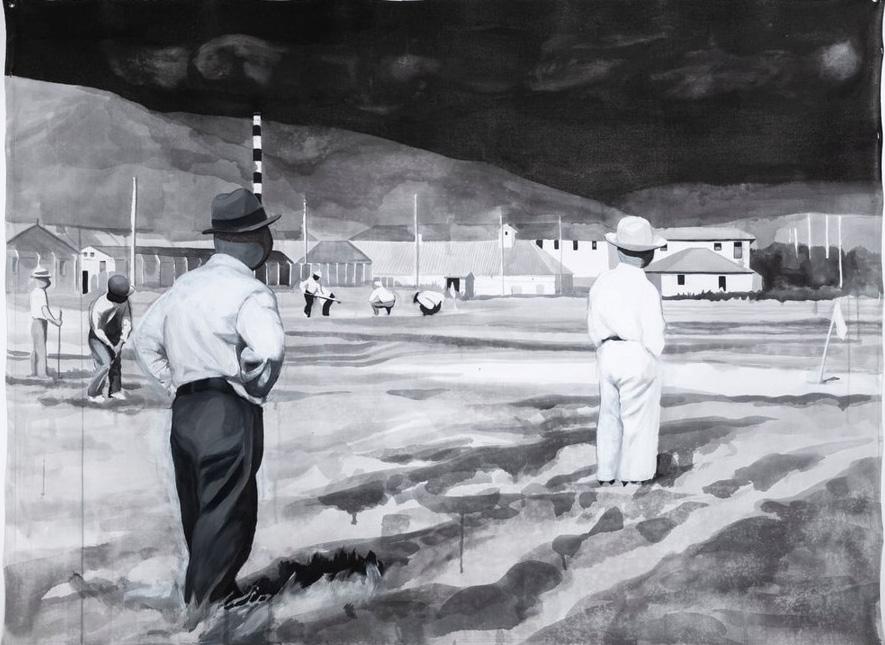
humorous and quirky, but which also addresses the issues of discrimination and racism that fueled Japanese American internment.”
In an interview with Tsutaja, she explained that the vicious looking animal heads on the golf clubs represented a “nine-headed dragon,” that served as “stand-ins for the figureheads like lawyers, politicians, and other authority positions, while the golf balls represent Issei who were forcefully detained.” One might also notice the white flags in her paintings and sculptures, which effectively represent surrender.
* * * * *
The deeper meanings of golf. The experiences people had at Stalag Luft III and Fort Missoula were in some ways similar, and in

other ways totally unique unto themselves. The point isn’t so much about comparison however, but rather how golf can be utilized in ways that go beyond sport. As these examples show there are moments when the game is not about scores, but how it affects your spirit.
Two quotes from a couple legendary golfers that lived around the time of World War 2 come to mind. One from the American Sam Snead, and the other from the British golfer Harry Vardon. They perhaps sum up the emotional game that the detainees at Stalag Luft III and Fort Missoula were actually playing:
Sam Snead: “Of all the hazards, fear is the worst.”
Harry Vardon: “For this game you need, above all things, to be in a tranquil frame of mind.”

BY TY SPARING
MSGA Communications Coordinator
UM and MSU at the Portland State Invitational
The University of Montana and Montana State golf teams wrapped up the fall portion of their season October 14-15 at the Portland State
Portland State Invitational ‒ Women
Columbia Edgewater Country Club
Portland, OR October 14-15, 2024

7.
8.
9.


Invitational. Ten teams, seven of whom coming from the Big Sky Conference had 54 holes of play at the Columbia Edgewater Country Club.
MSU finished in third place as a team at +35 (899), another solid finish in what has been a pretty successful fall season for the Bobcats. They were just two strokes away from conference rival Weber State for second place, otherwise coming out ahead of the rest of the Big Sky teams.
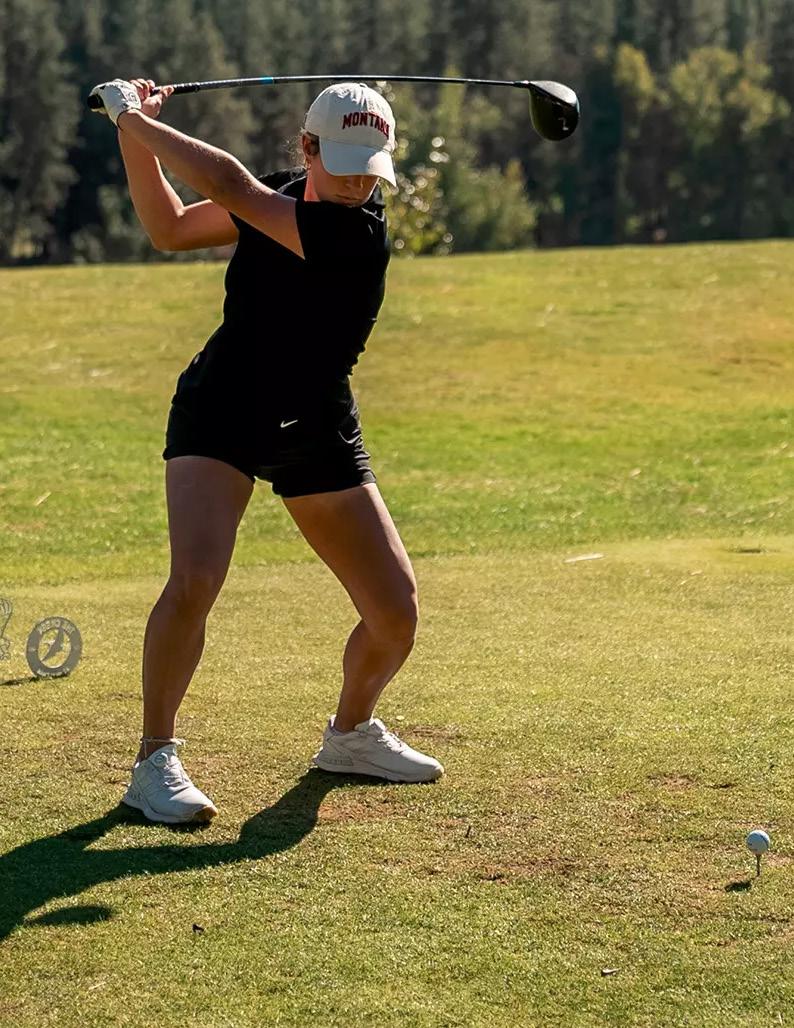

Lauren Greeny once again was the top Montana player with a sixth-place finish at +7 (223). The two-time defending Montana State Amateur champion Greeny finished off a fantastic fall season that saw her achieve victory at the Eagle Invitational, along with a host of top ten finishes.
Bobcat teammate Becca Tschetter joined Greeny in the top ten, finishing in a tie for ninth place at +9 (225). After missing the first two tournaments of the season due to NCAA transfer rules, Tschetter has burst onto the Big Sky Conference scene this fall with a ninth place finish and a victory at the Diane Thomason Invitational.
Scarlet Weidig and Maddie Montoya also cracked the top twenty for the Bobcats. Weidig finished in a tie for 15th place at +11 (227),
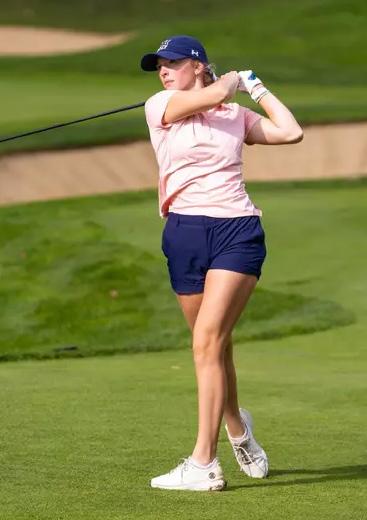
while Montoya ended up in a tie for 18th at +12 (228).
UM ended up in eighth place as a team with a collective score of +55 (919). Raina Ports and Elle Higgins joined their MSU counterparts in the top twenty. Ports finished in a tie for 12th place at +10 (226), while Higgins ended up in a tie for 18th place with a final score of +12 (228).
On a side note, Rocky Mountain College fans would’ve recognized Utah Valley’s newest star golfer, Valentina Zuleta. The former All-American for the Battlin’ Bears was also participating in the Portland State Invitational and ended up tied with Ports for 12th place at +10 (226).
For full results CLICK HERE.
Although most of the Frontier Conference teams have wrapped up their fall seasons, Rocky Mountain College men’s and women’s teams had a little playing left to do before the winter break. They were down in Windsor, Colorado for the Battle at the Dance, held October 14-15. Competition was set at the Raindance National Resort and Golf with three rounds of competition for the men, and two rounds for the women.
With nine teams in both men’s and women’s tournaments, once again the Battlin’ Bears had players scattered throughout the leaderboards. The women’s team won the event with a collective score of +77 (653), which was seven strokes ahead of second place Dakota Wesleyan. The men’s team had a little bit of heartbreak after coming in second place at +8 (872). Hastings College, the host team, caught fire in the final round to

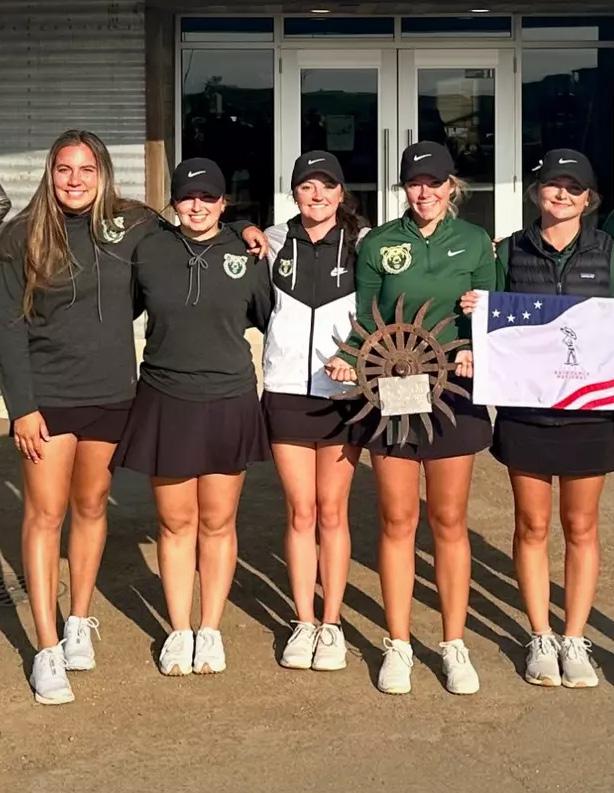
Raindance National Resort and Golf
Windsor, Colo.
October 14-15, 2024

October 14-15, 2024
1.
2.
3. K. Burkelca RMC
4.
5. A. McDonagh RMC
6.
7.

13.
14.
15.
16.
win the event over RMC by one stroke.
Kadence Fischer led the way on the women’s side, finishing in a tie for fourth place with a final score of +16 (160). Joining her in the top ten was Isabella Downing and Grace Metcalf who tied each other for sixth place at +17 (161). Downing’s second round tied for the lowest individual round of the tournament and managed to shoot her up the standings by ten spots.
For full women’s results, CLICK HERE.
The RMC men’s team was once again led by Kristjan Burkelca, who was one of three players to finish the tournament under par, tying for second place at -1 (215). Three of his teammates also finished in the top ten: Jared Smith was fourth place at +1 (217), Aidan McDonagh fifth place at +3 (219), and Jake Johnson ended up in a tie for seventh place at +5 (221).
For full men’s results, CLICK HERE

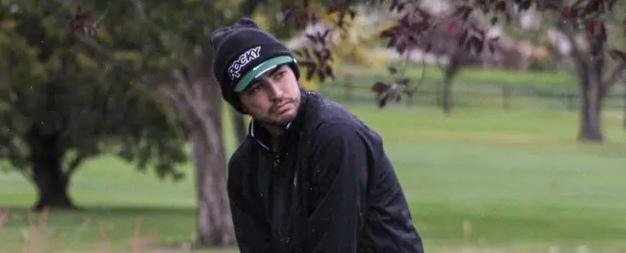
The MSU-B women’s team wrapped up their fall portion of the season October 21-22 at the Midwestern State Invitational. They had three rounds of action at the Wichita Falls Country Club against twelve other teams, six of whom came in ranked in the top 35 nationally.
The Yellowjackets ended up in twelfth place as a team at +92 (956). Having dominated all season, it was a good chance to go up against some highly competitive teams, and after a rough first two rounds at 325, MSU-B ended the tournament on a high note with a third-round score of 306.

Orraya Tipasathien once again led the way for the Yellowjackets finishing in fifteenth place at +14 (230). After a record setting fall season, Tipasathien will look to continue her winning ways once the spring portion of the season resumes.
Perhaps the biggest highlight of the tournament for MSU-Billings was the third round play of freshman Ella Tannenberger who tied a program record for the lowest single round score at -2 (70).
After a successful fall season, the Yellowjackets now have a break and a chance to focus on studies and rest up for the start of the spring season.
For full results, CLICK HERE.
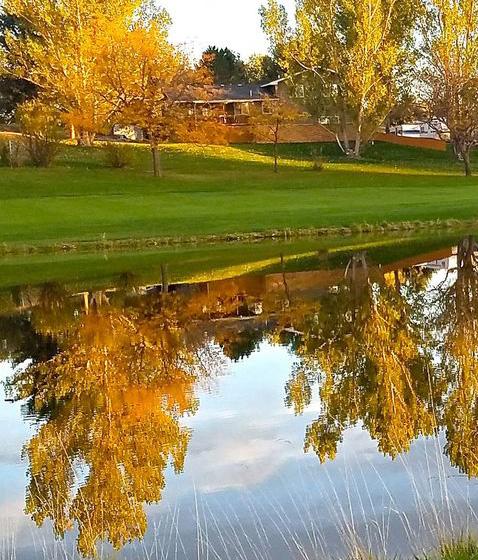
Midwestern State Invitational (Women)
Wichita Falls Country Club
Wichita Falls, Tex. October 21-22, 2024
MSU-Billings at the Yellowjacket Invitational
The MSU-Billings men’s and women’s golf teams stayed in town for one of the final events of the season, the Yellowjacket Invitational. Six men’s teams played three rounds of golf at Lake Hills Golf Course in Billings, while nine women’s teams played two rounds.
Once again the story of the day was Orraya Tipasathien re-writing the women’s MSU-B record books with her fifth straight tournament victory. The win now puts the sophomore in a tie for most in school history. With six birdies over the two rounds, she won the event by four strokes with a final score of +5 (149).
Teammate Adessa Lundberg also had a career best finish at +11 (155) which put her in third place when it was all said and done.

Also in the top ten was Pygmy Kompoj and Gia Vargas who tied for seventh at +13 (157).
With four players in the top ten, MSU-B finished in second place as a team at +45 (621), just one stroke off first place Texas A&M International.
For full women’s results CLICK HERE
The men’s team likewise finished in second place at +25 (889). They were led by Graedon Woodward who at -4 (212) was one of four players to finish the invitational under par. He had fifteen pars over the three rounds and an eagle during round three.
Joining Woodward in the top half of the field was Hayato Ito in 14th place at +10 (226), Logan Connolly tied for seventeenth at +12 (228) and Ryan Badger finished up in a tie for nineteenth place at +13 (229).
For full men’s results CLICK HERE





BY ZACH NICOLUDIS USGA REGIONAL DIRECTOR - CENTRAL
As the end of another busy golf season approaches, one trend that looks like it will continue for the foreseeable future is courses investing in improvement projects. Renovating bunkers, adding tees, replacing the irrigation system, expanding drainage or doing a major course renovation are all investments that may be long overdue for many golf courses. It is important to remember that golf course renovation is like performing major surgery and it takes time for renovated areas to recover.
There is often a belief that near-perfect conditions will be presented immediately after areas of a golf course are renovated. This

is simply not the case. When projects like installing drainage or a new irrigation system are completed, scars will be visible where work was done. These areas will recover, but it takes time for sod to establish or for turf to fill the voids that were created in disturbed areas.
If new playing surfaces are established –e.g., rebuilding putting greens or regrassing fairways and tees – it takes time for the juvenile turf to mature. It usually takes around three years for renovated playing surfaces to reach maturity. Quality playing conditions will still be experienced while new surfaces mature, but thin areas are likely and new turf won’t be as resilient to stress – especially during the first year. Demands for firm and fast conditions must be tempered
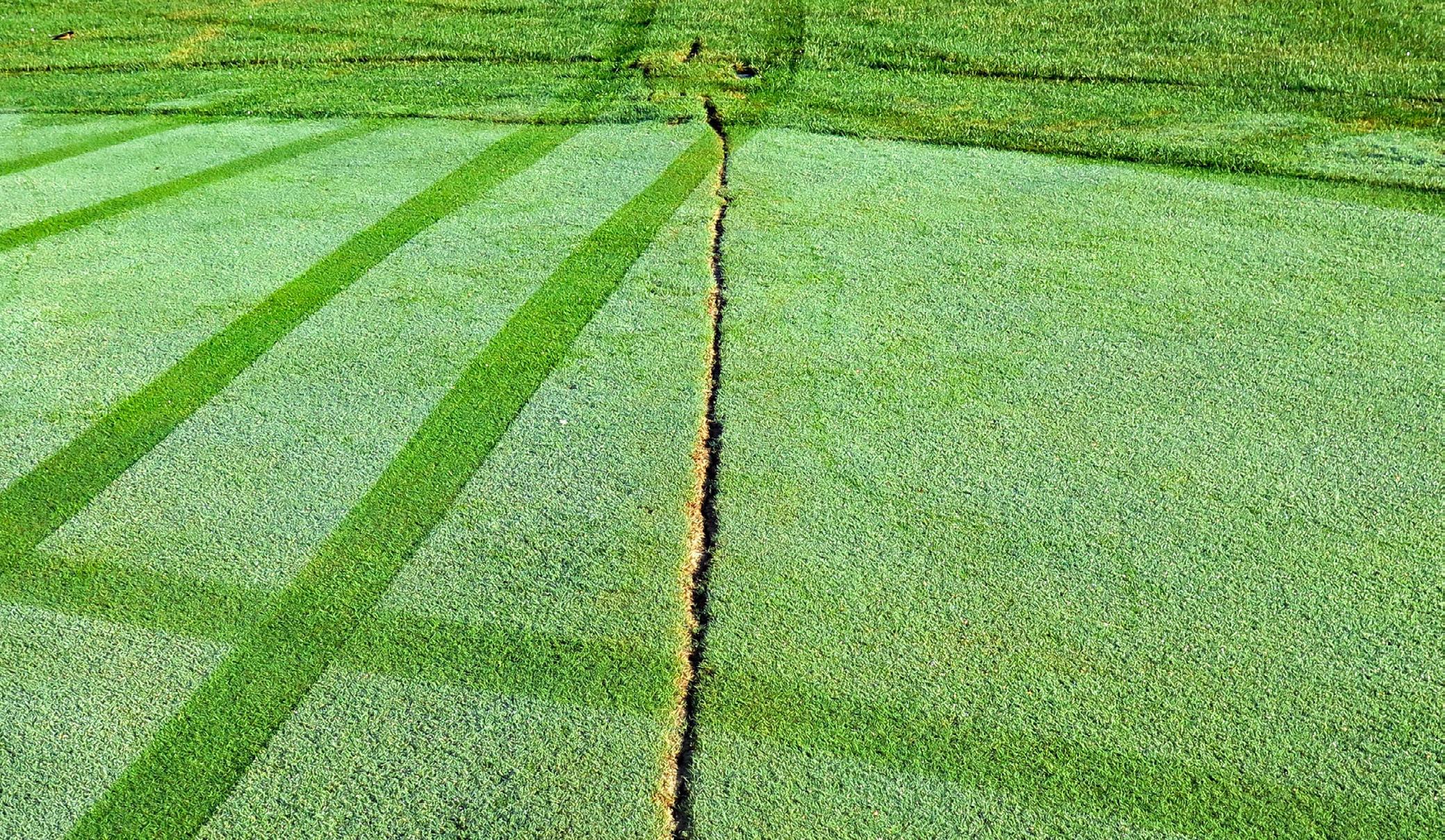

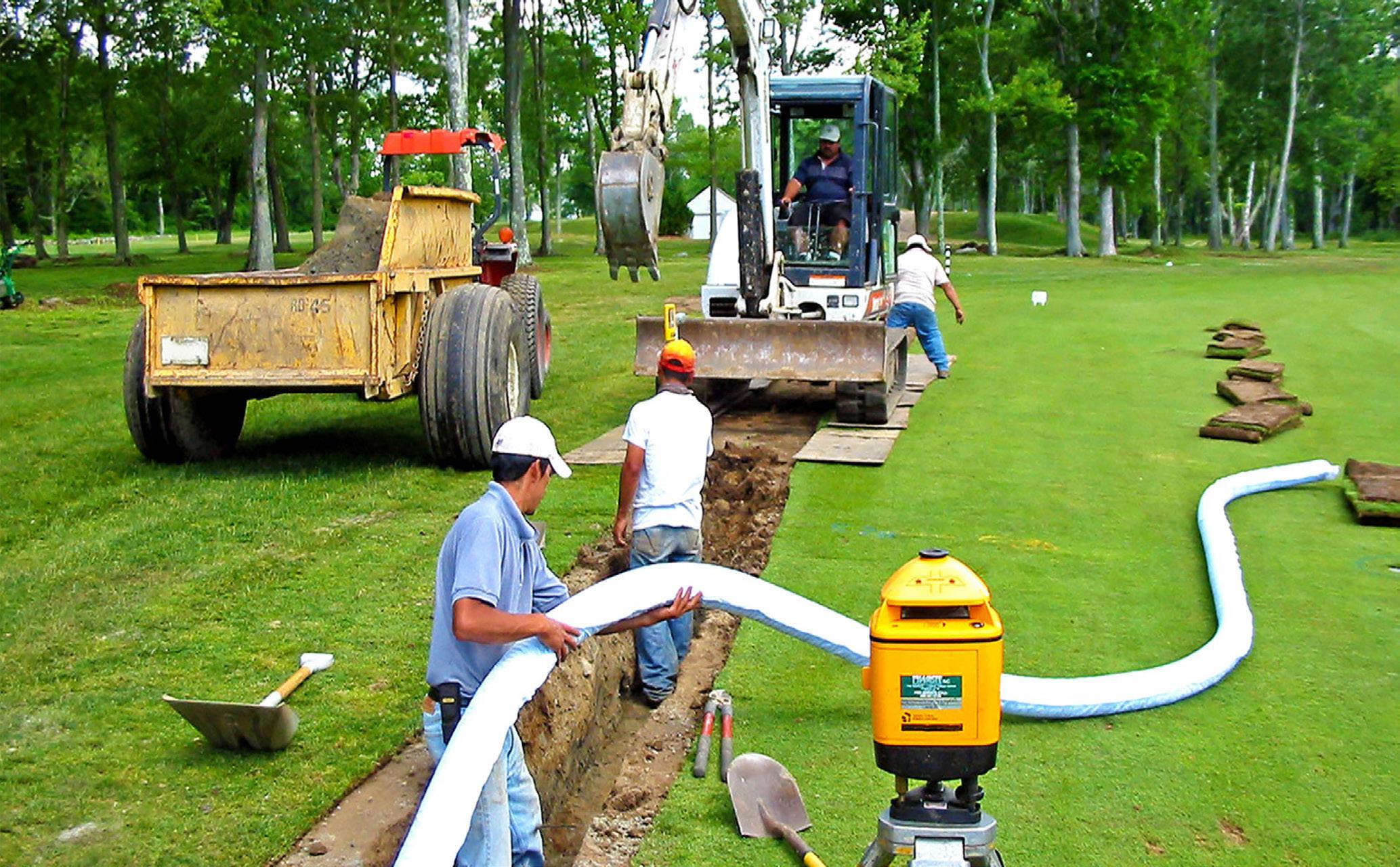
Adjusting the agronomic program for renovated playing surfaces plays a major role in promoting turf maturation. Fertility and irrigation needs will be different for seeded or sodded areas when compared to non-renovated portions of the course. For seeded areas, developing a proper mat layer helps promote the maturation of new playing surfaces and the cultural management program will need to be tailored to achieve this. When sod is installed, supplemental aeration will help disrupt the sod layer to encourage deeper rooting and allow water to

move into the rootzone.
Investments in golf course improvement projects are made for their long-term benefits. Recovery from construction and the maturation of new playing surfaces are just some of the aches and pains that come with progress. It cannot be overstated how important it is for realistic expectations to be set prior to renovation work – no matter the size of the project. For support with your golf course renovation project, reach out to your regional USGA agronomist.
Click Here for more from the USGA Green Section Record ‒including the latest articles and videos on sustainable management practices that produce better playing conditions for better golf.


